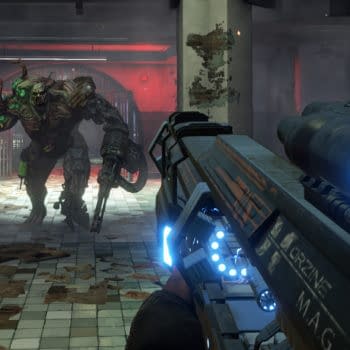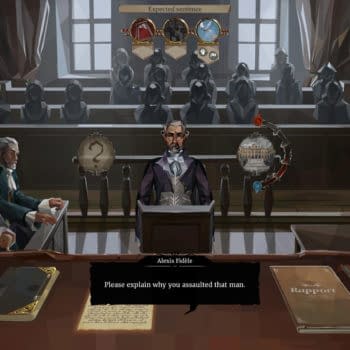Posted in: E3, Games, Video Games | Tagged: Bandai Namco, e3, E3 2017, project cars, project cars 2, Slightly Mad Studios
Project Cars 2 Hands On At E3
Bandai Namco and Slightly Mad Studios trucked out Project Cars 2 for E3 this year, with a bunch of demo kits set up with racing chairs and a McLaren 720S hanging out in the corner for atmosphere. I'm notoriously picky about racing sims, because I tend to be an obnoxious car enthusiast who whines about how racing sims don't get the proper feel of being behind the wheel of the impressive vehicle collection they taut. But Project Cars 2 has managed to make me sit back and accept, this is almost perfect.
When it comes to racing sims, the most difficult thing is the driving physics. There's a certain amount of difference between the real act of driving and driving in a game that we expect. For one, you aren't steering with a wheel, but usually a thumbstick, and there's no real way to actually give a digital car a sense of proper weight. When you go to turn a car in a video game, the game's engine almost always factors your speed, breaking, and turn angle. But what it doesn't account for is the weight of the car and the way it grips the road.
Every car tire, whether high performance low profile or off-road ready, is built with a tread designed to hold the car onto the road. Granted, your supercars are also designed to create down-force, with specific aerodynamics designed into the vehicle to make it stick. And when you try and turn, there's resistance. Not just because of velocity, but because of that traction between the tire and the track.
But that's never really been built well into video games. There are just some aspects of reality that don't translate properly into video games. That's why every fighter or rpg doesn't include actual real world physics when it comes to martial arts or swordsmanship. The physical limitations of the human body aren't what we want when we game. We want something that feels "realistic" but not something that is "real."
However, with a driving sim, we expect just a little bit more of the real world thrown in than in a lot of other game genres.
Its why we salivate over exotic car packs, because we may never drive a Mclaren 720 S, but we want to feel like we have. So the car has to look the same, and in many ways, we'd love for it to drive the same.
But racing sims don't add launch modes, they don't properly account for many of the hard science aspects of driving, and we steer with thumbsticks, or even maybe an arcade setup with a simulated steering wheel. You don't use your feet to accelerate or break, which might be like formula 1 driving, but in a game like Project Cars 2, Gran Turismo Sport, or Forza Motorsport 7 where we're driving production, street legal vehicles, that just doesn't add up.
The closest, most real seeming racing sim I've ever experienced was built with an actual physical car, with a real engine, as the controller.
That's obviously not a feasible setup for any game outside of an auto show attraction, but it does represent the dream.
Bandai Namco and Slightly Mad Studios' Project Cars 2 comes the closest to recreating the actual physical sensation and physics of driving that I've ever gotten in a PC/console setup. That is their mission statement, its why they have professional drivers working with the team to help nail down the physics engine, and it shows. It really, really does.





![[REVIEW] "Gang Beasts" is Zany Party Madness](https://mlpnk72yciwc.i.optimole.com/cqhiHLc.IIZS~2ef73/w:350/h:350/q:75/rt:fill/g:ce/https://bleedingcool.com/wp-content/uploads/2019/09/gang-beasts-7-350x350.jpg)




![[REVIEW] "Divinity: Original Sin II" Definitive Edition is Almost Perfect](https://mlpnk72yciwc.i.optimole.com/cqhiHLc.IIZS~2ef73/w:350/h:350/q:75/rt:fill/g:ce/https://bleedingcool.com/wp-content/uploads/2018/08/Divinity-Original-Sin-2-Definitive-Edition-art-350x350.jpg)





